 |
| |
+intro |
New Orleans. Heartbreaking. We lost New Orleans. It has been difficult for me to find my own words so for hours I have watched the news. For hours I have listened to the news. For hours I have read the news. And since I don’t have any of my own words to share, I offer a random sampling of what I have read and what I have heard:
“Are we late?”- Larry King (CNN) / “There were bodies floating dead at my door”- American citizen / “I begged people to evacuate and some people chose not to” - Gov. Haley Barbour (Mississippi) / “The buses never came”- American citizen / “There was no one in control, there was no authority”- American citizen / “I don't want to see anybody do anymore goddamn press conferences. Put a moratorium on press conferences. Don't do another press conference until the resources are in this city.”- New Orleans Mayor Ray Nagin / “The evacuation effort is not being made easy due to sniper shooting and transportation problems”- Reporter (MSNBC) / “We’ve been out here for 3 days! We’ve been asking for help”- American citizen / “Anybody walking the streets of New Orleans is taking their lives in their own hands”- Chris Lawrence (CNN) / “This state of civil unrest will come to an abrupt end in a short time”- Sgt. Mark Mix (Louisiana State Police) / “They (National Guardsman) have M-16s and are locked and loaded. These troops know how to shoot and kill and I expect they will,"- Gov. Kathleen Blanco (Louisiana) / “We didn’t stop our mission in Iraq when there was a little sniper fire”- Jesse Jackson / “Considering the dire circumstances that we have in New Orleans- virtually a city that has been destroyed- things are going extremely well”- Michael Brown (Director of FEMA) / “The officials are congratulating themselves while the people are suffering”- Larry King (CNN) / “I don’t want to sympathize with those who want to blame somebody”- Gov. Haley Barbour R. (Mississippi) / “I’m tired of politicians saying they sympathize with the frustrations of the people down here… people are dying”- Anderson Cooper (CNN) / “I sympathize with the frustrations of those who are suffering from this terrible tragedy”- Senate Majority Leader Bill Frist / “Where its not working right, we’re going to make it right.”- President George W. Bush / "The buses never came" - American Citizen / "We want help"- The People of New Orleans
Our hearts also go out to the people affected by Hurricane Katrina in Mississippi, Alabama and greater Louisiana. God bless you all. Big Up Kanye.
Welcome to nat
creole. Online. The online magazine especially created
to offer an eclectic and accessible guide to the people, places
and ideas of the global Arts and Culture community. In this
issue, we open our ongoing discussion on Black Philanthropy with a profile of The Links, Incorporated ; Continue our Conversation with photographer Jon Lowenstein; send an open letter to Gil Scott Heron; Rewind back to 1964 for a John Coltrane concert, and check the HeadKnot playlist for music to cop
And find where to see it all, hear it all, watch it all with the nat
creole. Events
Calendar. Concerts. Art Openings. Book
Signings. Festivals. Symposiums. Dance Performances. Museum Exhibitions
and Programs. DJ Shows. Its all in there. Check it out and then
bookmark it. It'll be there every night of the week.
|
|
| + profile |
Black Philanthropy 1a
Links, Incorporated
Philanthropy is about hope….the act of giving service to others is an act of hope for them, for ourselves, and for unknown others whom we will never know.
-- Robert Payton
A former co-worker and fellow arts soldier once posed a question regarding Black philanthropy. It went something like this,
“Do Black folks give money?”
Now this wasn’t a person lacking insight into Black culture. She understood the amount of money the Black community regularly puts in the collection plates at church. She understood that there is a certain mistrust of charities that continually raise money but fail to offer widely visible results (aka the Jerry’s Kids Principle). She also understood that a widespread understanding of how to use charitable giving as a way to provide shelter from the IRS doesn't exist. But her job was to raise funds for a major cultural institution that was directly involved in the preservation of the legacy of the African Diaspora, so she needed to know...
“Do Black folks give money?”
Didn’t have an answer for her at that time. I don't have an answer for her now. But given the increasing divide between the haves and have nots, Black philanthropy is going to become an increasingly important topic and someone is going to have to have some answers. As supporters of the Arts, nat creole wants to get in on the conversation. We invited Kijua Sanders-McMurtry and Nia Woods Haydel, authors of "The Links, Incorporated: Advocacy, Education and Service in the African American Community,” a chapter from the book Uplifting a People: African American Philanthropy and Education, to jump off our look at philanthropy in the Black Community. A subject we will return to periodically. The following piece, prepared especially for the readers of nat creole (thank you ladies), introduces us to one of the most active organizations currently involved in charitable giving: The Links, Incorporated.
Introduction
The Links, Incorporated was established in 1946 by two African-American women whose vision was to form an organization that would invite friends to “link together in service to their communities.” Fifty-eight years later this organization—comprised solely of African-American women—is one of the leading philanthropic organizations in the Black community, particularly in the areas of community service, fundraising, and monetary donations. More than eleven thousand members in over two hundred seventy-five chapters in the United States, Germany, the Bahamas, and South Africa are committed to linking their social relationships and individual commitments to community improvement. The Links members have established initiatives within their local communities related to “Black youth, the arts and national and international trends and services.” Many notable women have held membership in this organization including Mrs. Coretta Scott King and Drs. Sadie Alexander, Helen Gray Edmonds, Betty Shabazz, and Johnetta Cole.
Significance
There is a dearth of scholarship on women philanthropists, and the literature becomes even more sparse when narrowed to African-American women philanthropists. This is unfortunate, for as some recent historians have shown, African American women have been vital to the philanthropic activity of the broader Black community. These histories are steps in the right direction, but there is still much work to be done to balance our understanding of African-Americans—and especially Black women—as philanthropists. Our research contributes to the growing body of scholarship on this topic.
African-American philanthropy has traditionally included the giving of time, talent and services in addition to monetary donations. As philanthropy scholar Emmett Carson contended, “nearly every traditional Black organization is not only membership based but relies heavily on those members to volunteer, contribute money, and solicit others to participate.” Carson argued “Black nonprofit organizations may represent an ideal model for other nonprofit organizations to emulate,” if their goal is to increase volunteerism and fundraising in their various communities.
In these ways The Links is paradigmatic of African-American philanthropy, yet the organization also has a unique history and purpose. Philanthropy comes in many forms and from various sources. When considering philanthropic organizations, the White, male model of giving large monetary gifts to a cause is what generally comes to mind. Conversely, when considering the act of giving in the Black community, service and fellowship are the images one often sees. Our research presents The Links as a well-balanced model of the two traditional varieties of philanthropy. Understanding The Links illuminates the complex social workings of philanthropy in the Black community.
Linking Friends in Service: Program Highlights
A few programmatic examples of the work of The Links on both the local and national levels are highlighted in this brief summary. In 1974, The Links presented the United Negro College Fund with a gift of $132,000 which at that time was the largest donation ever made by a Black organization. Since the 1970s, the organization has given over $1 million dollars each to four organizations that focus on community needs for people of African descent including the UNCF, National Association for Advancement of Colored People (NAACP), National Urban League, and NAACP Legal Defense and Educational Fund.
Both the Angel City and Sacramento chapters of The Links initiated a program to increase African American male college enrollment which they call the “Achievers” program. Through this initiative they have contributed over $1,190,000 in scholarships and have helped to enroll over 1000 young men in institutions of higher education.
Focused on increasing educational opportunities abroad, The Links partnered with International Foundation for Education and Self-Help (IFESH) to build schools in post-apartheid South Africa through a program they called “Education Across the Miles”. Links’ members strategically raised funds to build 57 schools throughout provinces in South Africa. The goal of this project was to provide access to education and other important resources including books, clothing and shoes to children in the poorest areas of South Africa.
When considering African American organizations that have been instrumental in affecting the social uplift of the Black community, The Links should no longer be overlooked. This organization began only fifty-eight years ago, during a time when the Black professional class was largely disregarded in American society, and has risen to become a major change agent in the Black community. Our brief history has only provided a glimpse of the important contributions of this group of women. Our future research on The Links will reveal both the complexities and contradictions inherent in studies of Black middle class organizations, and provide a comprehensive historiography of The Links, Incorporated.
Kijua Sanders-Mcmurtry and Nia Woods are ph.d candidates in the department of educational policy @ georgia state university.
Questions and comments can be sent to daskm@longate.gsu.edu
|
|
| |
|
|
| |
| +questions. answers |




jon lowenstein part ii
photographer. photojournalist
We pick up on our conversation with photographer John Lowenstein, the 2004 World Press photo prize, the 2003 Nikon Sabbatical Grant, the 58 th National Press Photographer's Pictures of the Year Magazine Photographer of the Year Award and the Fuji Community Awareness Award. John takes us to Afghanistan where he covered the country’s first democratic election, beat down a persistent fear and spent time with the Afghan day labor community.
Nat Creole: You went to Afghanistan during their national elections; tell us about your experiences there.
Jon Lowenstein: I took a risk going there but my friends were going and I thought I would check it out. And the elections, I thought it would be very interesting to witness them and to be there for them. But I didn’t really have a clear vision of what I wanted to do there. Eventually I got an assignment to cover the elections for the newspaper. I was nervous because I thought it might pop off and that there might be some serious conflict. I didn’t know how I would react and I was pretty nervous about that. In retrospect I’m pretty happy about how things turned out.
I don’t think I’m a conflict photographer. I’m more than happy to go to conflict zones but I’m probably not going to be shooting the bang-bang. That’s not me. I think I could do it if I had to and if it were a story that I cared about enough about. But I don’t think I want to be the bang-bang- James Knockley-getting in conflict and people shooting guy. That won’t make me happy and considering really tense situations in the past that I’ve been in, I don’t think I would be good at it. I don’t think I have the reflexes, I don’t think I have the quick thinking you should have to do that work. On the other hand, once you get to a place and you’re in a place its amazing how quickly you can become focused and start doing things you didn’t think you could do
NC: Riiggghht. I like that notion.
Jon: But it was great. I went over and thought I was going to mainly focus on the elections. It took a long time for me to get in the country because it was hard to get there. And I was coming late because I had a show in Chicago a few nights before. I was really only able to shoot the night of the election which was a bummer because I really wanted to cover the lead up. Still, it was as exciting as you would imagine it to be. But what was really exciting was the dispute after the election, if you recall. People were saying that the election was a fraud and there was a problem with the ink. That was when the real excitement began
After the dispute died down, I heard about these guys that do day labor over there. I had been working on this project dealing with day labor in the US and found that it was the same deal over there. Instead of coming from Central America, they were coming from Iran and returning to Kabul from points all over the country
NC: The differing patterns of immigration in the different regions of the world are interesting to check out.
Jon: Really interesting, so I started shooting the day labor quarters and it really echoed what was going on here. Afghanistan is one of the poorest countries in the world and it was really devastated but at the same time it was an amazing place and the people were incredible. All in all it was phenomenal experience and it was good to take the fear and just look at it, confront it and go forward. Every time you do that it pays off.
NC: What are you plans for the Day Labor project?
Jon: I have plans to continue in Japan, I’ve seen day laborers in Tokyo, and the Gaza Strip. There are so many places where there are day laborers. I think it would be interesting to photograph that story in both third and first world countries because there aren’t a lot of differences between them
NC: It’s been interesting watching how you have gripped the story and gotten more into it, starting with your project on the Mexican migrant community. What is the process like when a story is unfurling in your mind and your interest is increasing at the same rate, when you’re getting more into the story and its coming out more in your work?
Jon: A lot of it just immersing yourself and that’s hard sometimes because what I’ve been finding difficult is balancing all of the projects I want to do. I have a lot of interests and there are a lot of things I want to do. But that can be both strength and a fault sometimes. I like being in the different communities I shoot but its hard to keep up and keep a sense of who I am in my own life. That’s been a challenge as I get more into my career, I mean my life really. But I like to follow that little voice in my head that keeps telling me this is a great story because that is when you get the good shots
John is opening a show of his work in Brookline, MA on the 16th of September.
For more information go to www.johnlowenstein.com. |
|
| |
| +seen |
  
9 muzes group show / 9 muzes / atlanta /
www.9muzes.org
tortured soul / new york city /
www.torturedsoulmusic.com
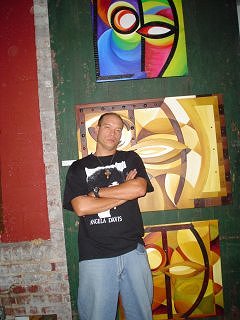 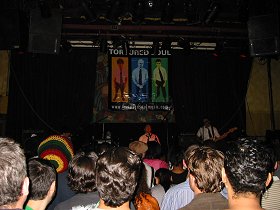
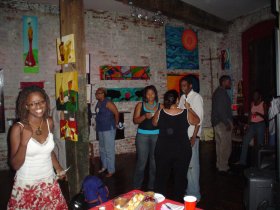  |
|
| |
|
|
| |
| +essay. gil scott heron |
 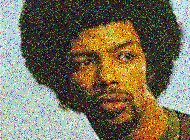 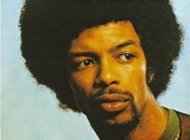
paint it black
open letter to gil scott heron
Dear Uncle Gil
What’s the word!!! Man, I can’t call it. Life sure is funny Unc… but you know what, at this point I ain’t even tryin’ to figure it out no more... sittin’ here watchin’ these folks on T.V talkin’ ‘bout outta body experiences. I’m black… nigga, don’t they know I am an outta body experience! “I felt a soft white light engulf my entire being”... yeah right, who they kiddin’ man? Where’s the remote?? Then you got this um… runaway bride foolishness (you seen the goggles on this chic?). Lemme tell you, “The Fly” ain’t got nothin’ on this broad brotha… that’s for damn sure… but anyway, enough about that. How you been uncle Gil? You been on my mind a lot lately and I was just thinkin’ ‘bout the stuff we talked about last time (o.k, more like what you told me…) I listened… and I been thinkin’ Unc. Know how you always used to say THE REVOLUTION WILL NOT BE TELEVISED? Well you’re never gon’ believe this, I had a dream about you last night, right, and um… you was still livin’ over there in northeast, right off a U street in the hood, good ‘ol Chocolate City… WASHINGTON D.C. Man, it sure has changed since then… I loved that house so much Uncle Gil… ‘member how you used to take us over to Rock Creek Park on Sundays and people’d come up and ask for your autograph and bug you to perform or recite like even one poem, then when you did ANGEL DUST, the whole park would push they lighters up in the air like the 4th of July? Just like that… magic… remember?? But you know what I really miss? The drummers… oh my God, those drums, and flutes… those really were the days Unc…
Everybody still asks about you too like, “is he really your uncle?” Of course I tell ‘em the truth… I’m like “can’t you tell?” So then they’re like “y’all do kinda look alike,” and I’m like “see!”… then they’re like, “yeah, I heard he on that “shit…” You know how folks love to gossip… I just tell ‘em “don’t believe everything you hear…” They tell me you gettin’ out pretty soon Unc, and I can’t wait to see you, we really miss you… I know you said you didn’t want nobody to see you like that and everything but like mama always say, everybody gotta go through what they gotta go through… and family… we’ll always be here for you no matter what, through the thick and thin, knowhatimean? Shoot, you prolly got like um… 100 new songs for your next album… I know you been keepin’ up on the “news” and stuff, everything that’s been goin’ on lately. The hurricanes, Martha Stewart, gas prices… it’s like a B MOVIE all over again. I’m sure you seen the doggone um…SPACE SHUTTLE give it another try. Sure hope they get it right this time… but ain’t nuffin’changed Unc, it’s just like you said, once again, WHITEY ON THE MOON.
Anyways, lemme tell you ‘bout my dream Unc… at least what I still remember of it. It was wild... you, Brian Jackson and the rest of the Midnight Band live at the White House. Right on the lawn too (inside the gates) by the same spot that crazy ass man tried to land that single engine plane, remember? It was freezing too… I don’t mean just cold… I’m talkin’ like 28 degrees man, must’ve been like mid January, y’know, typical WINTER IN AMERICA. So you start the set off with RE RON right, and guess who appears outta nowhere to back you up. You ain’t gon’ believe this one, friggin’ Luther Vandross!!! I shit you not… shoulda seen it… I’m like this is too much, who they gon’ bring out next, LADY DAY AND JOHN COLTRANE? You was on fire Unc! Ya’ll went right into JOHANNESBURG, nah, bump that, you brought Jo’burg right to the Oval Office. First class… they wavin’ signs and everything, “Gil For President, Gil For President,” you doin’ SHUT EM DOWN and the whole time I’m thinkin’ to myself, this is nuts!!! That’s when I woke up (you know how it is…)
So the other day I found myself ‘diggin through the ol “crates” and um… guess the SPIRITS told met to drop you a line Uncle Gil, just to let you know we’re all doin’ fine, and if you need anything you could always call, y’know? I’ll accept the charges… Oh yeah, guess what! Started takin’ piano lessons last month. I know, “bout time huh? Yeah, you right. You always right… just a little ahead of your time… and guess what? All the stuff you showed me is comin’ back too, imagine that!! Don’t worry Uncle Gil, by the time you come home I’ll be able to show you a couple things… got a lotta catchin’ up to do, but we gettin’ there… so anyway, Unc, I’m ‘bout to call it a night, so um…just remember to hold your head, be safe, and stay strong. WE LOVE YOU!!!
Till next time…
PEACE GO WITH YOU BROTHER
G.
-Gordon Manning.
atlanta based writer. musician. "Jack Of All Trades." hobbies: water sports |
|
| |
| +remembrance. |
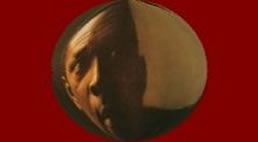 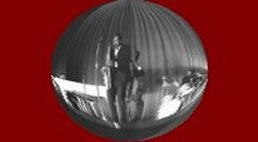
john coltrane in concert
@ McKee's. chicago, ill. 1964
McKee Fitzbugh’s jazz club was a sho nuff dive of a place on the south side of Chicago. It was located near the corner of 63rd and Cottage Grove on the east side of the street. A sloppily renovated storefront, on any weekend night you could walk down the street and see the most legendary of the jazz legends performing in the club’s window like holy-roller preachers. It was summertime in the city but the folks at McKee’s didn’t care. Creature comforts consisted of big rusty looking floor fans with propeller blades and wobbly heads which they kept off almost all the time so that the screeching sounds didn't compete with the music. They were stuffing 8, mostly, unrelated individuals in raggedy red vinyl booths that were built for 4. The tears in the old vinyl were the only places where you weren’t sticking to your seat and if you weren't sitting on the end you couldn't raise your glass to your lips.
Added to this, the entire Coltrane scene was a little frightening when you saw him for the first time. This was especially true if you were someone who liked the buttoned-up/ cooled-down look and feeling of a MJQ (Modern Jazz Quartet) or Cannonball Adderly show. Coltrane was mismatched and sweaty and totally unaware of you after he got started. Not in a disdainful enjoy-my-back now Miles kind of way, more like a gone-someplace- else kind of way. He was listening more intently than anyone else. To be truthful with you, if you weren't careful, you got caught up in his intensity and lost the music. At the time I found it disturbing and I was glad to get out of there once the man woke from his trance. But now, miles and years away from the heat, sweat, torn vinyl and vacant stares, I often look back and wish I had taken away more.
-Sunni Knight.
DC metro based writer. soldier in the fight against family violence |
|
| |
| +playlist. |
| head knot 4 selections carry the heat into Fall
{brought to you by CD- Musicologist}

Zuco 103
Whaa!
2005.Six Degrees Records
Is it Samba?
Is it electronic? Is it funk? Is it pop? Genres
don’t apply on this gem. The group is global, Rio-born
singer / lyricist Lilian Vieira,
Amsterdam-born drummer / composer Stuv
aka S.Kruger, and Munich-born keyboardist / composer Stefan
Schmid. The music is global. Good vibes
music is global. All that’s missing is the Mojito,
white sand, and bundas.
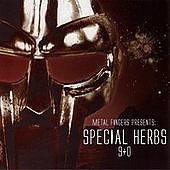
MF Doom
Metal Fingers Presents: Special Herbs 9+0
2005.Shaman Work Records
Remember KMD back in the day? The pickininy look and the backpack vibe? Zev Love X, the one with the glasses, is still puttin’ it down, but now he’s MF DOOM, and he got beats. And he got ideas. Connected with Madlib, maybe the most dynamic producer working today, this album is all instrumental tracks that are abstract and grimy at the same time. Through tragedy and strife, Zev has still managed to stay ahead of the curve
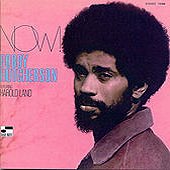
Bobby Hutcherson
NoW!
1969.Blue Note Records
Personnel:
Tracks 1 - 5:
Bobby Hutcherson: Vibraphone; Harold Land: Tenor Sax; Kenny Barron:
Piano; Stanley Cowell: Piano; Herbie Lewis: Bass; Joe Chambers:
Drums: Wally Richardson: Guitar, Electric Guitar; Candido Camero:
Conga; Gene McDaniels: Vocals; Hilda Harris: Vocals; Albertine
Robinson: Vocals; Christine Spencer: Vocals. Tracks 6
- 9: Bobby Hutcherson: Vibraphone Manny Boyd: tenor and
soprano saxophone; George Cables: piano; James Leary: bass; Eddie
Marshall: drums; Bobbye Porter Hall: percussion; Los Angeles Philharmonic
Orchestra conducted by Calvin Simmons
Liberation music. Why do vibes sound so sweet when the weather is balmy? A gleaming jazz reflection of a time when change was in the air. The revolution will not get rid of the nubs.
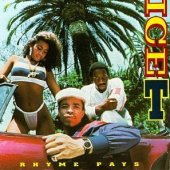
Ice T
Rhyme Pays
1987.Sire Records Company
“6 N The Morning” is still raw 18 years later.
- CD
Seattle based CD is an educator, father, husband and longtime Ricky Williams fan.
any questions, comments of musings can be sent to insightdeluxe@yahoo.com |
|
| |
|
|
| |
+travel essay. bang pong, thailand
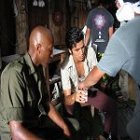
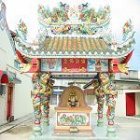
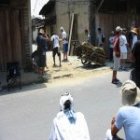
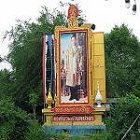
habu to genkotsu
japanese movie magic thailand style
|
In May of 2005, Kurokoboshi took time out of his Tokyo hustle to film a movie in Bang Pong, Thailand. The following is an excerpt from the American-ex-patriate-Tokyo-dweller’s thoughts on making movies in the hinterlands of Thailand
Pre-quel
I had the opportunity to act in a Japanese film entitled Habu to Genkotsu that was being shot in the Thailand countryside. It all started with a phone call from my friend Schon. He got an offer to do a movie in Thailand, but couldn’t take it. He wanted to know if I was interested. Always ready to add another chapter to my life’s story, I agreed. I had never been to Thailand. I had heard many stories about Thailand and experienced many situations vicariously through friends, and now it was time for me to share my experiences.
Before leaving I met the directors, producers, and writers of the film I was going to appear in. I was impressed by what I heard. The film is based on a true story about an Okinawan sansen (3 stringed guitar) player named Ryo and his experiences growing up in Okinawa in 1968. Ryo meets an American military solider named George, and they discover that they have more similarities than differences. The atmosphere of the film is heavily charged with discrimination and prejudice- Okinawans and Japanese (yes there is a difference-big difference in fact), US military and Japanese/Okinawans, officers and enlisted soldiers- and takes place with echoes of the civil rights movement lingering in the backdrop. I finished my gig on the Joint One Radio Show on Monday as the Kurokobushi and had three days before shooting to discover who this George was and time warp to 1968.
Day 1
I left my home at 7am for Narita Airport, just before the morning rush. I grabbed my last bite of Japanese food for two weeks, boarded Thai Airlines Flight #647 and arrived in Thailand. Airports can be very deceiving. They make you think everything is okay and then you enter the real world. Outside the airport I saw my first glimpse of Japanese capitalism, a Family Mart (convenience store) and add it to the American capitalism glimpse (KFC) I noted earlier. Paul (our driver) rolled up in a mega van and it was off to the hotel in Bang Pong, our filming location. Paul spoke a little English so I drilled him for some heads up Thai. We arrived at the hotel about two hours later and I had dinner with the actors. Everyone was great especially Shogen (who is playing the part of Ryo) and Mitsuki. The hotel room had HBO Asia, but I needed internet access to see if the Spurs won game 7.
Day 2
Got up early and went for a morning walk. Traffic in Thailand is like a free for all, with few lights and tons of scooters. I had breakfast in the hotel and in the afternoon went to one of the locations were the actors Mitsuki, Shogen, Ishida Eri, and Sai were filming. I couldn’t believe how much rural Thailand reminded me of my Grandma’s farm in South Carolina. Time has actually stopped in some places. I did the traditional aisatsu (Japanese greeting, bow and small talk) with the directors, and entire staff. Greetings are so important in Japan because it communicates humbleness and respect. Things are on a hierarchy scale so I had to give props to the big fish. I took care of my responsibilities.
Day 3
One of the film locations had really bad karma. In one room of the house, the owner kept helmets from dead soldiers of the Vietnam War. Needless to say, everyone filming in that room felt sick and kanashibari (feeling of being bound or held down, but you can’t see what’s holding you). I met our police protection, a definite necessity when you’re in rural Thailand. He was very helpful and even let cast members ride his motorcycle. Kai showed me where the internet café was, at last I could reconnect with the world and find out who won the NBA Championship. We stayed at the internet café for 3 hours and it cost 45 cents. And the Spurs won, life is good.
Day 5
I rehearsed my first scene with Shogen and the director really liked it. But there was one small problem, George smokes and I don’t. It’s funny because Shogen didn’t smoke before the movie either, but through out the day I see him smoking more and more. I practiced all night, trying to decide how George would hold his cigarette. Maybe old school like Billy Dee in Lady Sings the Blues, long drawn out puffs with that right mix of sophistication and class; or like Larenz Tate in Love Jones, where the cigarette never leaves the mouth. It just dangles like a conductor’s baton moving in sync with each word. No, I got it. Denzel Washington in Devil in Blue Dress, a southern pace, not too slow not too fast.
Day 7
We headed back to the hotel and everyone wanted to have lunch in the open market near our shooting location. This was my first time visiting an open market and I had no idea what to expect. My only images of open markets were of old school James Bond movies. Reality was a little different. Now, I consider myself to be a brave individual, but the open market was too much. I try to eat as little meat as possible and this situation was strictly unsanitary. Important note: I was a member of the fortunate few that did not have any major stomach pains during the trip.
I passed on lunch and went in search of fruit. I found a fruit juice stand and ordered a watermelon juice (hold the flies and bees). Here’s another small piece of advice, watch the vendor. He put ajinomoto (MSG) in my fruit juice. Yes, there was also an incident at the hotel where they put salt in the orange juice. It’s best to ask before you order.
Day 8
It’s George’s debut and I’m up early to eat breakfast at the hotel. The staff was nice and they helped me with my Thai. Departure time was 10am. We were the 3rd out of 4 scenes being shot. When we arrived at the location, Ishida Eri was finishing up her scene and everyone was preparing for the second scene. I practiced my lines with Shogen and become George. It’s kind of weird, but all of the film crew call you by your character’s name, not your real name. We had lunch after the second scene and I prepared for my debut. The assistant director announced my appearance on the set. I felt like royalty. We did a couple of rehearsals and then it was time for honban (recording).
Day 11
Another sunrise in Thailand and a new challenge. This time 5 cast members and I are off to see the bridge over the river Kwaii, the bridge not the movie. I learned a lot about the Vietnam War and WWII during the trip. For the record, the place is an official tourist trap. The bridge was a little disappointing, but very scary. There are no sidewalks on the bridge, just railroad ties and track. People and trains are crossing the bridge at the same time. It’s survival of the fittest. As for the bridge itself, I was expecting something bigger, as a kid I visited the Royal Gorge, and have become familiar with Japan Rainbow Bridge and Bay Bridge in Japan. This was relatively small. Oddly enough, we never crossed the bridge; we took some pictures, saw some foreigners, bought some souvenirs, and prayed for peace.
Day 14
Time came for me to leave. Shooting had wrapped up and the production lights were turned off. The two weeks in Thailand went by too fast but I had a wonderful time. The people were friendly and scenery was fantastic. Thailand is a melting pot of different religions and the traffic is insane. Here’s a little bit of inside info from me to you. Bangkok’s real name is Krung Thep Maha Nakhon Amon Rattanakosin Mahinthrayutthaya Maha Dilokphop Nophrarat Ratchathani Burir On Udom Batchaniwet Maha Sathan Amon Phiman Awatan Sathit Sakkathattiya Witsanukam Prasit. It means the city is large like the city of angels, the city houses the emerald Buddha and…..
Keep growing,
Kkb
Kurokobushi is the CEO of Osmo media and dj/ producer of the joint one hip hop show in tokyo.
|
|
| |
|
| nat creole. |
Founder/
Editor:
Phillip Harvey
Managing Editor:
Kathi Davis
Creative Counsel:
Alia Jones
Kurokobushi
Gordon Manning
Kijua Sanders-Mcmurtry
Nia Woods Haydel
DJ Silverboombox
Sunni Knight
Brook Stephenson
Ed Myers
Jon lowenstein {www.jonlowenstein.com}
John ballon { www.musthear.com} |
|
| |
|
 |